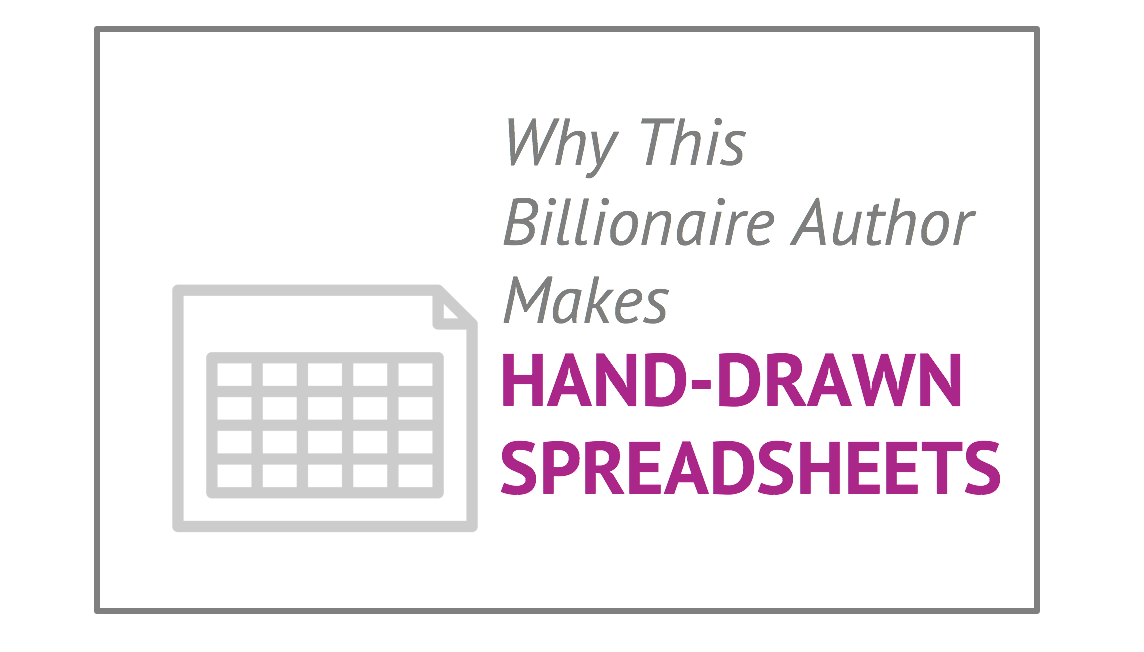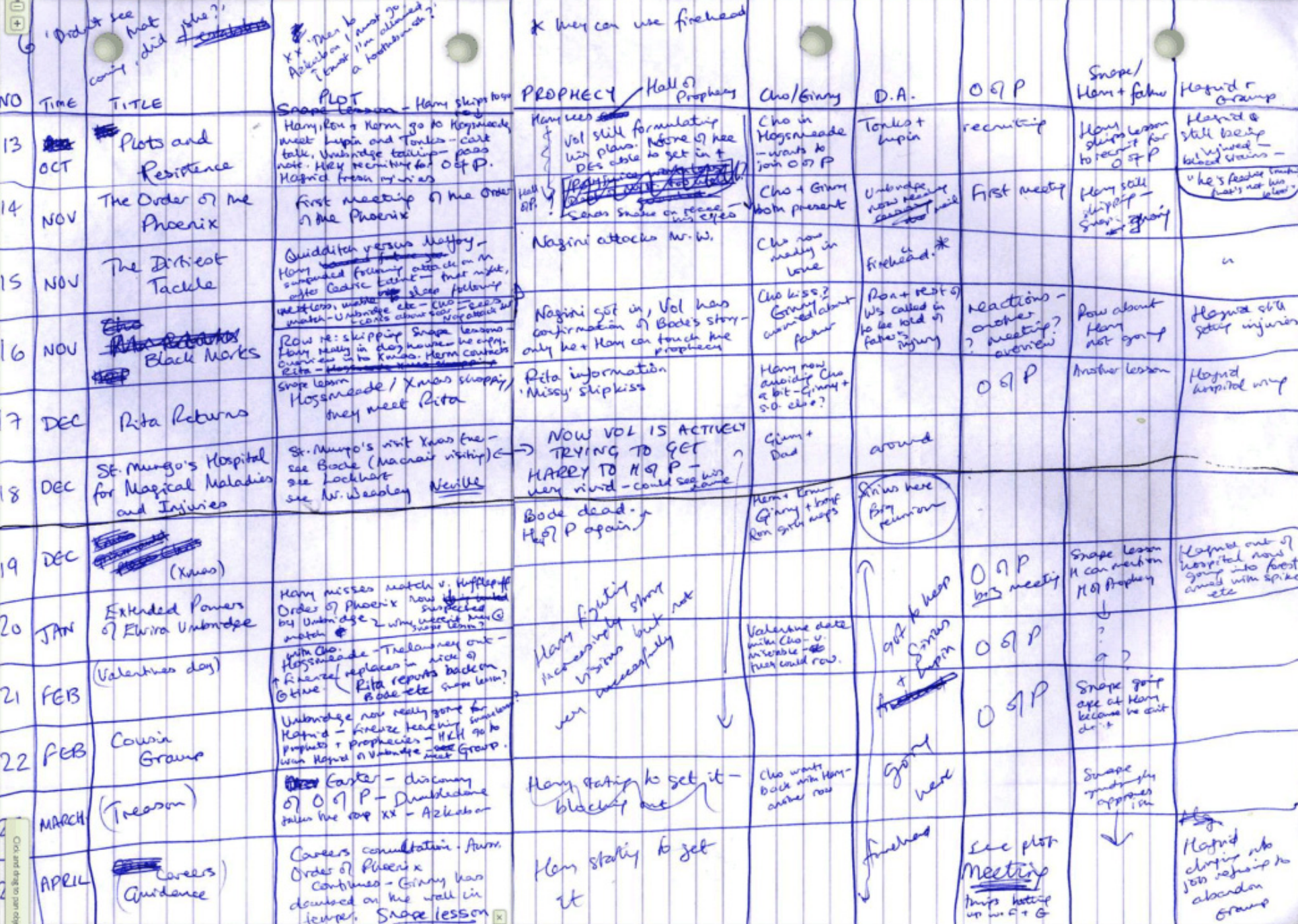A bring-it-to-life planning process underpins creativity.
To get the Compound Return newsletter in your inbox every month, subscribe here.

J.K. Rowling is an undisputedly high-octane artist. In the zone where creative meets productive, this woman has plenty to teach us all, presiding over an empire of beloved books and the net worth to match. Clearly she has a certain magical brand of imagination in her cortex. But how does she bring that into physical existence in the form of books?
When I did a bit of research into Rowling’s creative process, I was delighted to find that she relies on an extensive planning method for every novel. It’s not glamorous. It’s not mysterious. It’s a hand-made spreadsheet.
In fact, she visually organizes her thinking into elaborate tables – detailed, color-coded, handwritten tables that chart plot evolution and character development, ordering and numbering each step. It’s a blueprint for creativity.

Rowling’s process speaks to the enormous role of planning in any creative undertaking. On content projects, I always find that the hardest part is the creative planning session. Once this blueprint of a piece is done, the writing and editing, no matter how extensive, are easy by comparison.
And interestingly, Rowling’s blueprint is a mix of the content – who casts spells or slays dragons, etc. (yes, it’s been a while since I actually read Harry Potter) – but it’s also a project management timetable. It’s the guts, and the timeline for making the guts. This strikes me as especially salient for the content keepers and creators of the world, who must be both makers and project managers.
By the way, it feels obvious that this should be a hand-drawn exercise, too. Some studies have explored the relationship between writing and thinking (versus typing and thinking), and found a different sequential activity process in the brain when writing by hand. In a Wall Street Journal article on the subject, University of Washington educational psychology professor Virginia Berninger was quoted: “[Berninger] says pictures of the brain have illustrated that sequential finger movements activated massive regions involved in thinking, language and working memory—the system for temporarily storing and managing information.”
As Rowling clearly knows, being good at the creative process is part of being good at creating.
Looking for a freelance financial writer to help you blueprint and create content? Reach out and let’s talk about your project needs.
Carolyn is a freelance financial writer with 15+ years of experience in financial services. She holds an MBA from the University of Chicago Booth School of Business and is a CFA charterholder. She writes from Washington D.C.
Posted By
Carolyn
Categories
Compound Return Newsletter, Content Marketing